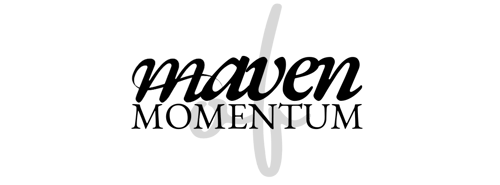The Ultimate Guide to a Well-Crafted Content Strategy
Ever wondered how to skyrocket your digital marketing game to unprecedented levels? The secret lies in a well-crafted content strategy! 🤢 🤮
Gah! I'm afraid it's true! 🫠A robust content strategy is not just about creating engaging posts—as I can't avoid sounding like a Lyre bird who's just tuned into a digital marketing conference—it's a finely tuned machine that delivers the right message to the right audience at the right time.
Imagine your content as a magnetic force pulling in prospects, transforming mere visitors into loyal clients. It's the driving force that resonates with your audience on a deep, emotional level, forging a profound connection and compelling them to take action.
This isn't mere theory; it's a proven strategy employed by the world's most successful digital marketers.
But this isn't just about social media content! This is much, much bigger than that.
So, it's time to step up your game and create a content strategy that's not just informative but persuasive and impactful (and easy for your to manage!).
In this blog post, we'll cover the following:
- Understanding Different Elements of a Content Strategy
- Expert Tips for Creating Compelling Content
- Incorporating Visual Content in Your Strategy
- The Role of Content Calendars in Your Strategy
- Streamline Your Process with Scheduling Tools
- Navigating Optimal Posting Times on Different Platforms

Understanding Different Elements of a Content Strategy
In the vast ocean of digital content, different formats serve as unique vessels, each catering to diverse audience preferences and engagement levels.
At one end of the spectrum, you have blogs—in-depth, informative pieces of written content that offer deep dives into topical matters. They are the heart and soul of any content strategy aimed at educating readers and establishing your brand as a thought leader in the industry.
Then comes the dynamic world of videos—a visual storytelling medium that boasts high engagement rates. Videos have the power to simplify complex subject matters, making them more digestible and appealing to your audience. They serve as a vibrant, interactive window into your brand's personality and values.
Navigating further, we find social media posts—bite-sized, engaging content that foster personal connections with your audience. They act as your brand's voice in the digital crowd, offering quick updates, initiating conversations, and building a community around your brand.
E-books, webinars, podcasts, infographics—the list goes on.
Each format carries its unique value, and the art of a well-crafted content strategy lies in leveraging these formats to their fullest, creating a balanced, diversified content mix that keeps your audience hooked and coming back for more.
Now, take a moment to reflect.
Are you maximising the potential of these diverse content elements in your current strategy?
Is your content resonating with your audience and driving engagement?
If not, it's time for a strategic re-evaluation.
Remember, in the realm of content marketing, it's not just about quantity but the quality and diversity of your content that truly makes a difference.
Expert Tips for a Compelling Content Strategy
Understanding your audience is a crucial pillar of any successful content strategy. Crafting content that resonates requires an in-depth awareness of who your audience is, what they want, and how they consume information.
This is where personalisation comes into play.
ContentStack has a fascinating article on personalisation statistics stating that 70% of millennials dislike when brands send them irrelevant marketing emails and prefer personalised emails over blast communications (as a millennial, I tend to agree, but I'm sure it isn't just our generation who cares about this!).
By tailoring content to individual preferences and interests, you create a unique experience that makes your audience feel understood and valued.
However, personalisation is only part of the equation.
A truly impactful content strategy is backed by relevant, compelling data. The Content Marketing Institute reports that 74% of readers trust educational content that includes data.
In a world where we've basically got an information overload, fake news, and AI reproducing loads of content in seconds, incorporating relevant statistics and data can strengthen your storytelling, providing factual support that reinforces your points and boosts credibility.
Lastly, the sharability of your content can significantly amplify its reach. People share content that resonates with them. Just think of how many quotes or poems people share in their Instagram stories or Facebook feed, or maybe even screenshots or links to news articles.
When you craft valuable, relatable, and inspiring content, it resonates with your audience, prompting them to share their thoughts effortlessly. It evokes an innate desire to express themselves, even without putting pen to paper. Consider content like an insightful how-to guide, an infographic, a thought-provoking article, or a heartwarming story.
By making your content shareable, using your unique voice and ideas, you not only extend your content's lifespan but also transform your audience into your very own "buzz"-maker. (Remember to include potent calls-to-action that urge your audience to share, comment, or explore further.)

Incorporating Visual Content in Your Strategy
As we move onto the undeniable impact of visual content, it's worth noting that there are a lot of articles that state humans process visuals 60,000 times faster than text. However, this is only partially true. A visual plays an essential role in creating an instant connection with the audience. Still, the mixed research suggests that it depends on the image and how familiar it is to the person looking at it.
Even with this in mind, the usage of high-quality images, infographics, videos, and other forms of visual content helps foster a richer user experience and boosts engagement.
High-quality images, for instance, can tell a story instantly, capturing the viewer's attention and communicating your message more effectively than a block of text ever could. Search Engine People has an article all about the power of imagery in your marketing content, from your website and emails to social media, it's worth a gander.
Infographics, on the other hand, are a powerful tool for presenting complex data in an easily digestible form (one of my favourite types of imagery, whether hand-drawn or done via a software program). By combining visuals and brief, concise text, infographics can improve comprehension, recollection, and engagement. A report by HubSpot confirms that infographics are liked and shared on social media 3-4 times more than any other type of content.
Meanwhile, the power of video content cannot be overstated. According to a survey by Wyzowl, 85% of businesses now use video as a marketing tool, with 88% of video marketers reporting that video gives them a positive ROI (return on investment). It's a dynamic medium that can be used to inform, entertain, and inspire, often all at once.
Incorporating these captivating visuals into your content strategy is not just an optional extra; it is an absolute necessity. They possess the power to persuade, entertain, and deeply engage your audience. Each visual form boasts its own unique strengths – harness them to curate a diverse and compelling content mix that shows off your unique voice and genuinely resonates with your audience. Remember, your content must not only inform but also inspire your audience to take action!

The Role of Content Calendars in Your Strategy
When it comes to content planning and strategy, one critical tool that often gets overlooked is the content calendar.
It takes time.
Effort.
And for many, it can seem a rather dull task.
But a content calendar (aka an editorial calendar) is the backbone to your entire content creation operation. It is a documented schedule outlining the timing and platforms for publishing upcoming content. It covers the what, when, where, and who of your content strategy.
Having a content calendar allows you to see across the board how aligned your messages are. It also helps to reduce overwhelm and burnout.
My top 7 Tips for Using a Content Calendar effectively
Tip #1 – Identify your content needs
Understand what content your audience wants and how often they want it. This can be determined through audience engagement metrics and feedback.
Tip #2 – Set realistic goals
Establish what you want to achieve with your content. It could be increasing website traffic, improving audience engagement, or boosting conversions.
Tip #3 – Choose the right platform(s)
Determine where your audience spends most of their time and prioritise those platforms.
Tip #4 – Choose the right type of content
Does your audience prefer quick access to information? Are they more inclined towards video, audio, or written content? Or do they enjoy consuming long-form content, such as blogs or YouTube videos? Also, consider what type of content suits the message(s) you're trying to get across.
Tip #5 – Create a content schedule
Decide when and how often to post content. This should align with your goals and audience preferences.
Tip #6 – Consistency is key
Stick to your schedule as much as possible. Consistency helps build audience expectations and trust.
Tip #7 – Monitor and adjust
Regularly review your content's performance and adapt your strategy as necessary.
😮💨
There's a LOT there to consider!! But content calendars are not just about organisation; they're about maximising the efficacy of your content strategy. By planning and scheduling your content ahead, you ensure a consistent flow of quality content that aligns with your business objectives, plus you can avoid overwhelm and burnout (particularly when something unexpected happens).
By implementing this approach, you can greatly expand the reach and engagement of your content. Your audience will also be aware of when to anticipate new content and is more likely to engage with it.

Streamline Your Process with Scheduling Tools
There are several different tools out there for scheduling your content. When it comes to social media, these are my top two favourites.
Free: Facebook Meta Studio
Facebook Meta Studio is a powerful tool that simplifies content management across Facebook and Instagram. The platform's interface is intuitive, allowing for easy scheduling, drafting, and publishing of posts. To make the most of Meta Studio, leverage its rich insights to understand your audience's behaviour and routinely adjust your posting schedule to align with peak engagement times. It's perfect for small businesses just getting started who've discovered their audience hangs out on these two platforms.
Paid: Later.com
With Later.com, you can streamline your content planning process and free up valuable time. This platform allows you to schedule posts for Instagram, Twitter, TikTok, Facebook, and Pinterest, all from one convenient dashboard. To fully leverage the capabilities of Later.com, make sure to organise and schedule your content in bulk. Utilise the visual content calendar to preview how your posts appear together before publishing. Additionally, take advantage of the analysis tools to determine optimal posting times and regularly adjust your content schedule to maximise engagement. The platform is user-friendly, and the visual representation of your feed proves invaluable if you have a specific aesthetic in mind for your Instagram profile page.
Utilising tools like Facebook Meta Studio and Later.com for scheduling posts in advance has numerous benefits.
- Consistent posting: It ensures consistency in your posting schedule, a factor that can significantly enhance audience engagement and trust in your brand.
- Avoids content publishing overwhelm: Advanced scheduling also aids in efficient time management by allowing you to prepare posts in bulk and schedule them to automatically publish at predetermined times.
- Robust Analytics: These tools often come equipped with analytics that can help you identify and target optimal posting times, thus maximising the reach and impact of your content.
In essence, leveraging these tools can improve your content strategy and drive the desired results.
When is the best time to post your content on social media?
Understanding your audience's active hours is a crucial aspect of an effective content strategy.
Why?
Because posting content when your audience is most active increases visibility, engagement, and the likelihood of your content being shared, leading to increased reach and potential growth in followers.
When I first started using social media, I would constantly search for information on the optimal posting times. However, in the end, I discovered that the most reliable method was conducting my own tests.
But to get you started, here are some results from research conducted in the UK and US:
- According to OptimizeSEO.co.uk, the best time to post is during off-work hours or 8 a.m. or 4 p.m.
- For people in the US, Sprout Social's research suggests the best times to post on LinkedIn are Wednesday from 8–10 a.m. and noon, Thursday at 9 a.m. and 1–2 p.m., and Friday at 9 a.m.
- And finally, Hubspot research suggests that for Instagram, optimal posting times fall between 6-9 p.m., 12-3 p.m., and 3-6 p.m., with Saturday being the best day. Facebook's peak engagement is during the evenings and mid-to-late afternoons, mainly between 6-9 p.m. and 12-3 p.m., with Friday and Saturday being the most effective days. On Twitter, marketers find the best posting time between 9 a.m. and noon.
The thing is, these times should be used as a starting point. Each brand has a unique audience, and the "best time to post" can vary based on factors like industry, target demographic, and geographical location.
And this is precisely what I found. I had more engagement from my audience between 8-9 p.m. GMT than any other time of day, and Thursday was always a better night of the week for me to post.
So, really, just choose a time and day(s) to post, monitor the results and then choose another time and date to post and compare the two (or more if you decide to go deeper). This way, you'll discover your unique 'best time to post'.
It's important to note that you never really stop testing your posting times, as audience behaviours can change, and staying one step ahead will ensure your content continues to have the maximum impact.
To Sum Up...
A successful content strategy is a dynamic and iterative process that demands attention. Understanding your audience's unique patterns and behaviours is key, including knowing the optimal times for posting content across different platforms. These optimal times can vary based on industry, target demographic, and geographical location. To maximise the impact of your content, consistently monitor engagement and adjust posting times accordingly.
Additionally, it's crucial to stay ahead of changing audience behaviours. Continually test and refine your strategy to make sure you're always one step ahead. By implementing these tactics, you'll create a more engaging and successful content experience.

 By
By


